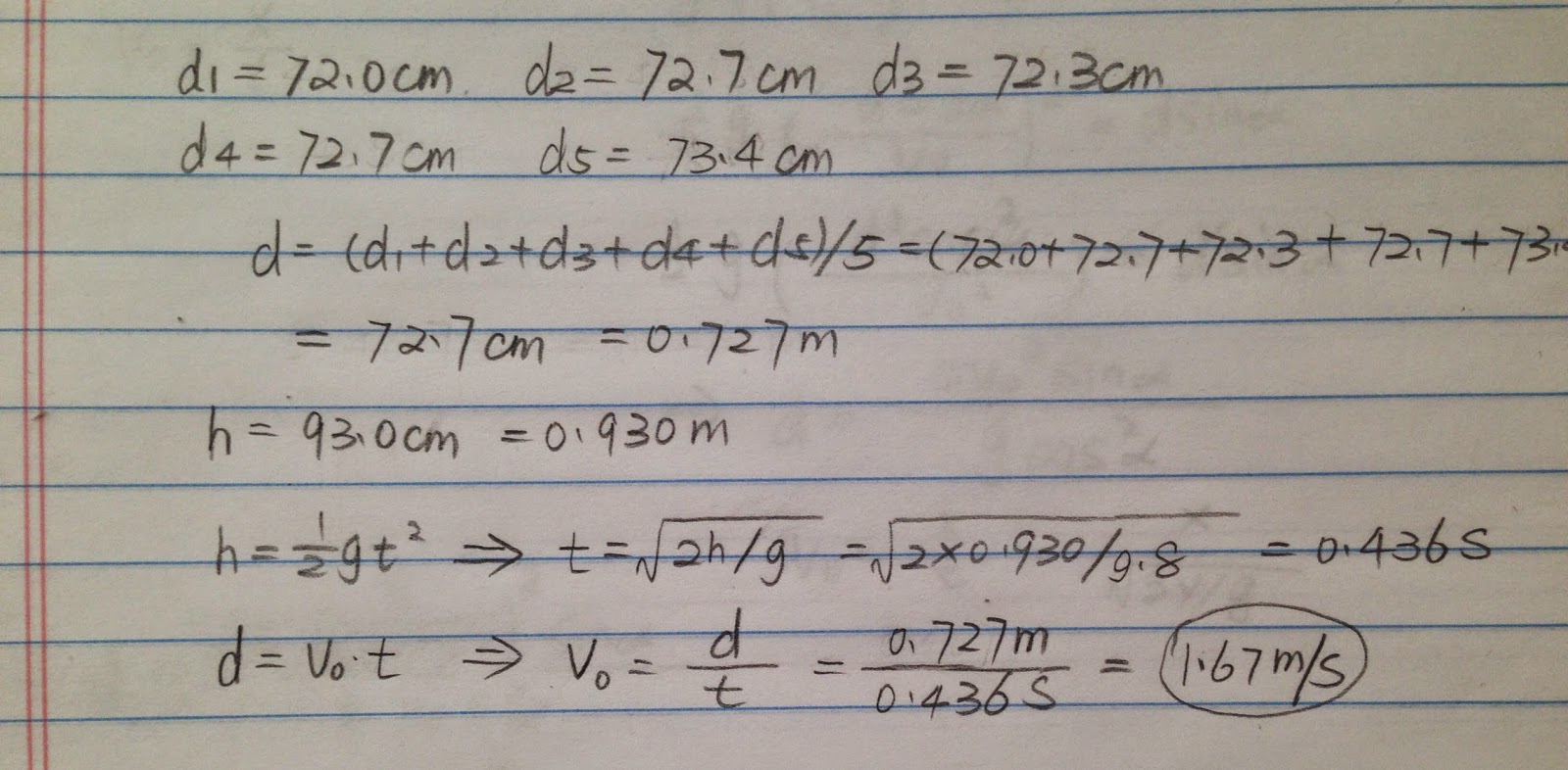According to the knowledge of trajectory motion we have learned to predict the impact point of a ball on an inclined board
Materials:
Aluminum "v-channel", steel ball, board, ring stand, clamp, paper, carbon paper
Set up
1. set up the apparatus as shown.
2. launch the ball from a readily identifiable and repeatable point near the top of the inclined ramp. Report where it hits the floor.
3. Tape a piece of carbon paper to the floor around where the ball landed. Launch the ball five times from the same place as before and verify that the ball lands in virtually the same place each time.
Measure the height of the lab table is 93.0 cm, and the distance out from the table's edge the ball lands is d.

Place a board such that it touches the end of the lab table and the floor. Put a heavy a mass on the floor at the foot of the board and use duct tape to fix the mass in place. Attach a piece of carbon paper to your board such that it "surrounds" the spot where the ball to land.
The experimental value of landing initial speed and distances d.
Summary:
By the measure value d and h, we find the initial velocity and the distance the ball landing.
After we got the initial velocity, we measure the angle between the board and floor, we find the distance the ball landing on the board.
Then we find the experimental value of initial velocity and the distance.









No comments:
Post a Comment